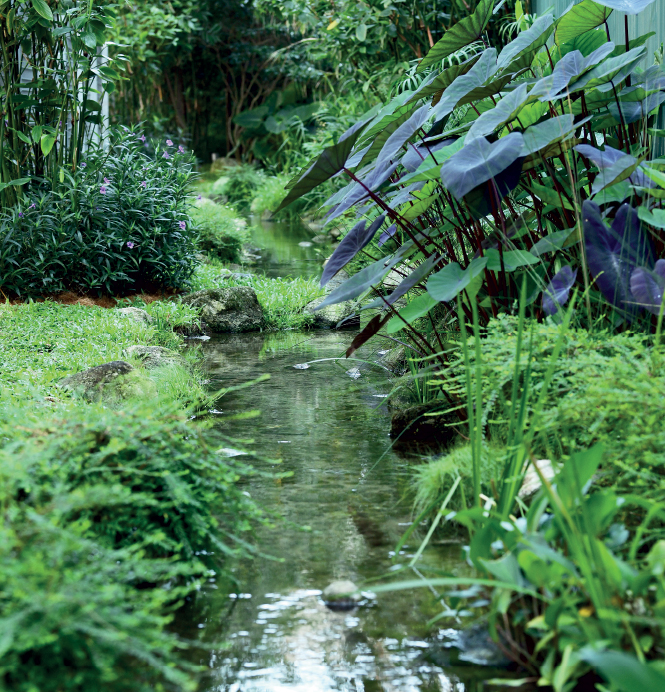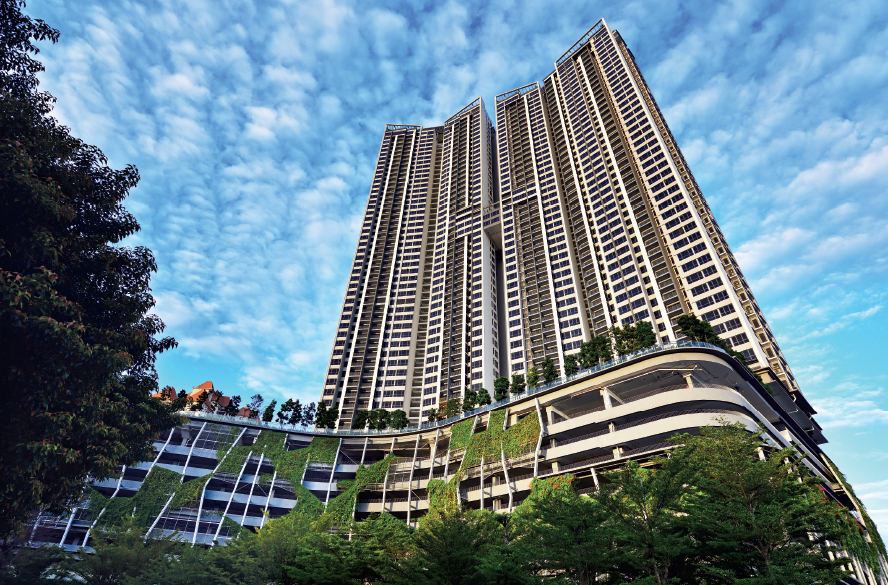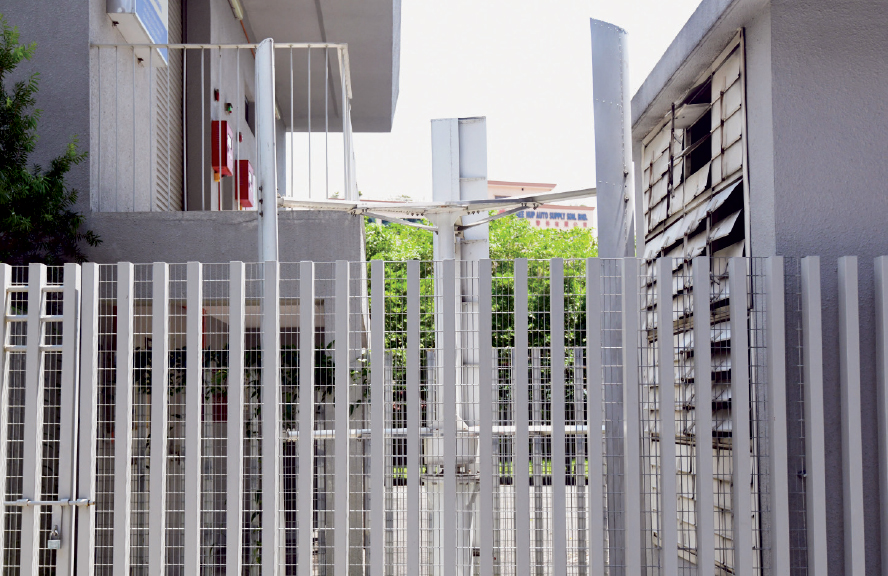This article first appeared in City & Country, The Edge Malaysia Weekly on July 17, 2023 - July 23, 2023

When I set foot in The Era Wetlands, I could not believe that there was such a serene landscape sanctuary — birds chirping, lower temperatures and fresh, crisp air — on Jalan Segambut, which is known for being an old industrial area.
The 1.26-acre The Era Wetlands is part of The Era Duta North, which is developed by JKG Land Bhd. When I interviewed managing director Datuk Teh Kean Ming in 2016 for the launch of The Era Phase 1, he said he intended to include a wetland in the project as a facility for the residents. It was a rather new idea back then.
Today, it has proven to be a good idea as The Era Wetlands has emerged as the Gold winner in the Landscape Design category of The Edge Malaysia-ILAM Sustainable Landscape Awards 2023, as well as winner of the Editor’s Choice Award — Malaysia’s Exemplary Landscape Design 2023.
Teh explains that the inspiration for the wetland came from fond memories of playing in a stream behind his childhood home in Bukit Mertajam, Penang, after school with his brother.
“When I was growing up in a kampung in Bukit Mertajam, there was a rubber plantation and a small stream behind my house. After school, we loved to go to the water to play and to catch fish. That was something very good for children,” he says.
“This development is in Segambut, with [many] old factories that cause air pollution. It can be noisy and messy. Of course, we can do a more straightforward way, which is to cut the land, and put in the building and the required 10% of green space. We could have just put in an open space with a jogging track, but we want to come up with something different on this land.”
The site of the wetland is “the remnant of the development”, he says. It is too close to the boundary of the development site, making it difficult to place a building there. Then, there came the idea of a wetland, which JKG Land believed would be able to differentiate The Era Duta North from other developments.
Teh continues: “A wetland is a sanctuary where you can have different plants; therefore, there is a diversity of greens compared to a regular green area. There is also water, which is a very soothing element. We hope our buyers can go home, after the hustle and bustle of daily life, to a place where children can play safely and adults can relax.”
The company engaged landscape architect Praxcis Design Sdn Bhd to design the wetland. The planning of the wetland up to completion took about a year. Teh says The Era Wetlands is a balanced ecological system and he believes it will add value to the property.
“I want to share with the young people the joy [our generation] had. That was a good memory. Also, if you are convinced you can make a difference, you should do something meaningful [in your developments]. Set a standard so that, hopefully, it becomes the catalyst for other developers. In a small way, we want to set a certain standard and benchmark in the industry.”

Praxcis Design director Yap Nga Tuan says there is a reason for everything that has been placed in the wetland. Everything — from the type of stone to shrubs and trees — has its purpose. Together, all elements help form an ecosystem in the wetland, purifying the air and river water naturally, while lowering the temperature.
Kidney of Segambut
The 217m-long wetland, which allows for the formation of a river from one end to another, has four sections: Wetland Cells; Forest Brooks; Water Play and Picnic Area; as well as Main Wetland.
The Wetland Cells are gravel stones and sand beds to support the growth of wetland plants. In these cells, effluents are filtered in the sand or gravel and biologically treated by bacteria living in the cell and exposed to plant roots, removing substances such as nitrogen and phosphorus, which is responsible for biologically cleansing the water.
The water continues along Forest Brooks, where a narrow section arranged with wetland plants, small stone boulders and driftwood is densely covered and bordered by trees, which improves the purification process and increases the oxygenate capacity, and builds a self-purifying cycle.
The Water Play and Picnic Area is the main recreational area, where picnic areas — overlooking the main wetlands pond — are set out for occasional gatherings. There is a hammock play spot for families, and children can also play in the shallow, clean water areas.
Finally, the central pond — which is located in the Main Wetland — serves as a wildlife sanctuary, protected by a lush aquatic marsh teeming with shoaling. It also provides a source of water for the birds, helps recharge aquifers and filters polluted water.
There is a total of 34 species of aquatic plants as well as 300 trees and shrubs in the wetland. They act as a natural filtration system for the habitat, which is home to aquatic animals, birds, fish, insects and mammals.
“We create the natural flow of the river, which is the wetland environment. We call it the ‘Kidney of Segambut’ because it performs an important ecological role to ensure harmony and balance in the ecosystem and raise the awareness and benefits of having ecological health. By using this wetland as a biological supermarket, climate conditions have been moderated, recreational opportunities have been recreated and wildlife sanctuaries have been re-established,” Yap says.
“We put in plants that attract the birds, which act as pest control. Some aquatic plants are the source of food and shelter to the wildlife. Then, birds and fish will come and make their habitat there because everything is sheltered and protected.”
Wind-harvesting turbines
JKG Land also uses wind-harvesting turbines, located behind the residential towers and near the wetland, to generate self-reliant electricity for the water feature pumping system in the wetland. The winds come from the basement car park via the car park’s mechanical ventilation system and the natural wind from the surrounding areas.
Teh notes that having a clear vision and criteria was very important in developing the wetland, so that the landscape architect could capture the vision and produce the desired result.
He says: “We are very particular about certain things, such as having crystal clear water. The water in the Main Wetland section is blueish because of the volcanic rock and limestones placed there. The things we want in the wetland have been fully captured [by Praxcis Design]. We also have a very experienced contractor to build the wetland.” He adds that it cost RM1.8 million to build the wetland.
The maintenance of the wetland costs RM9,000 per month and includes regular checks on the filtration system, clearing of weeds and blockages, pruning and debris removal.
As for The Era Duta North, Teh says Phase 1 has been fully sold and more than 50% of Phase 2, which was launched about a year ago, has been sold.
“The value of Phase 2 is about 10% higher than Phase 1. The second phase will be completed in 2025,” he says.
Located on a 14.86-acre freehold tract, The Era Duta North will have six serviced apartment blocks on top of a 3-storey retail podium and an 8-storey car park podium.
The apartment blocks, which will be launched over three phases, will have 53 to 63 floors each and offer a total of 2,913 units. Meanwhile, facilities will include a gymnasium, water pavilion, swimming pool, multipurpose hall and roof garden.
The 277,000 sq ft retail podium is retained by the developer to control the tenant mix. It is open to the public, with a dedicated entrance to the non-residents’ car park.
Save by subscribing to us for your print and/or digital copy.
P/S: The Edge is also available on Apple's App Store and Android's Google Play.
- China hits back at Trump with tariffs, limits on key exports
- Mr DIY founder Tan Yu Yeh relinquishes vice chairman post, to serve as adviser
- Malaysia refutes 47% US import tariff claim, takes measures to prioritise well-being of businesses and people
- 50,000 Malaysian jobs at risk, business chamber warns as it calls for urgent US tariff mitigation council
- Trump hits China tariff retaliation, says policy will remain
- ‘Worst-case scenario’ for tech wipes $1.4 trillion from Nasdaq
- Anwar says impact of latest US tariff on nation's economy still being assessed
- Tok Mat, Rubio discuss bilateral relations, Asean-US Special Summit date
- US solar’s hoarding habit will help blunt sting from Trump tariffs
- Wall Street rout drags Nasdaq near bear market





